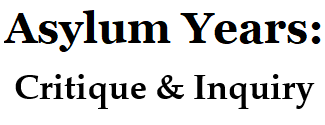


6. Reaction to the Report on the "Survey of Teaching at Ward Level"
4.52 During 1973 two young nurses who were members of the Nurse Education Committee conducted a survey amongst learners in St. Augustine's in order to find out whether there were improvements that should or could be made in ward teaching. It was prompted in part by their appreciation of a certain degree of apathy among some learners which had led to complaints by the doctors of poor attendance at their teaching Sessions, and in part by the discovery of the following entry in minutes of a Nurse Education Committee meeting in December, 1971:- "Regular clinical teaching and ward conferences are now, an accepted feature of modern psychiatry and the trend is towards more relaxed, informal multidisciplinary meetings. These are a feature of hospitals which have the therapeutic community approach... Dr. A stated he was under the impression these meetings were taking place regularly in all wards." That impression was ill founded and appeared to these nurses to show little knowledge of the true state of affairs.
4.53 In the survey 96 questionnaires were sent out and 38 returned. The authors analysis of the returns was well written and balanced. They stated that learners were dissatisfied about the following matters:-
(i) Although handover Meetings took place on most wards, it was felt that they were 'too skimpy' and "that they could be used to discuss more in depth patient care".
(ii) Nursing Officers visited the wards infrequently "and their interest in the training of learners was negligible."
(iii) "Nursing procedures were not adhered to, e.g. ward administrator on one ward had little introduction to CSSD and was obviously unable to teach its correct use. Wards have a lack of proper equipment for carrying out work. On one ward the dressing trolley was stored in the bathroom to hold socks etc. because the ward was without a general purpose trolley."
(iv) The ward changeover books could be used to better effect.
(v) "The storage of nurses notes separately from the main case notes discouraged learners from writing them."
(vi) The wards lack quick reference books.
(vii) Nurses in training had little to do with ward doctors. Although many doctors were giving some time to specialised lectures which were favourably received "the point of contact in the modern psychiatric hospital should be at team meetings where free discussion on patient care should take place. It is clear from this survey that most wards in this hospital have no such meetings... Team discussion has two major benefits - patient care is likely to be improved with clear policies to refer to which all staff fully understand, and the educational value of such meetings cannot be over-emphasized."
4.54 There followed a list of sensible recommendations culled from the survey returns.
4.55 The survey was sent with a covering letter to Dr. A (the Chairman of the Medical Executive Committee) and the Chief Nursing Officer, amongst others, Neither of them acknowledged the receipt of the survey or ever sought to discuss it with either of the authors who had spent about six months in its preparation, and yet both Dr. A and the Chief Nursing Officer subsequently maintained that they welcomed helpful constructive criticism. Further comment by us is unnecessary.